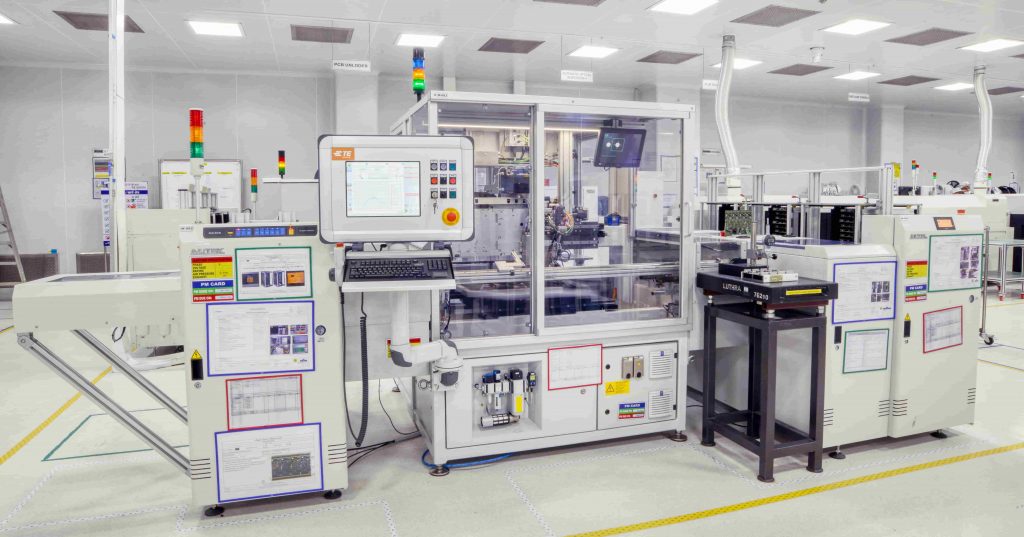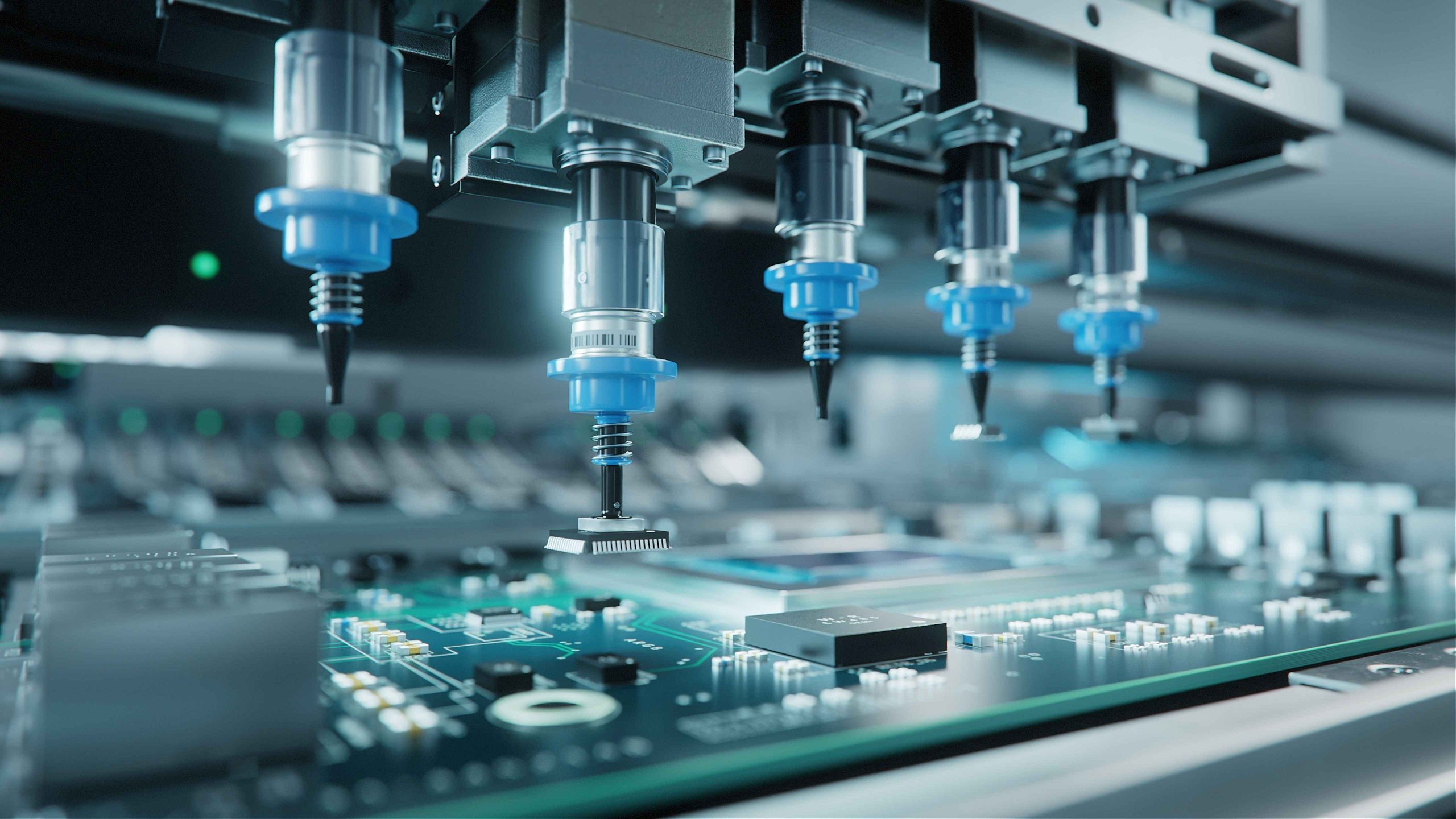It is evident that electronics manufacturing is a complex process.
Whether you are a hardcore engineer, an electronics manufacturer, or a CEO who has outsourced their manufacturing to another company, you are bound to face challenges from time to time.
With the ever-evolving semiconductor industry, Electronic manufacturing companies face several challenges that affect production schedules, operation margins, and product life cycles.
But it’s okay, we have got your concerns covered.
In this blog, we will discuss the challenges that electronics manufacturers face and what solutions you can implement to overcome them.
Challenge 1: Uncertain and Unplanned Customer Demand
The unpredictable and ever-changing customer demand is one of the biggest challenges in electronics manufacturing. As a result, electronics manufacturers struggle to meet production schedules and often face inventory overstock or shortage.
Solutions:
1. Implement automation in the global supply chain to respond quickly to changes in consumer demand.
2. Upgrade machinery and infrastructure to keep up with the ever-evolving semiconductor industry.
3. Hire skilled and experienced managers to control costs and reduce lead times.
4. Proactively appraise customers about any upcoming disruptions in the supply chain.
5. Have separate manufacturing lines for continuous mass manufacturing production and prototyping.
6. Rigorously test the product to comply with end-user requirements.
7. Optimize DFX (Design for manufacturing, Design of Assembly, Design for testing) to improve productivity and increase the first-pass yields of the product.
Challenge 2: Receding Operation Margins
Product prices are dropping due to frequent innovation launches and global competition. In the consumer electronics sector, there is pressure to reduce selling prices due to unpredictable semiconductor prices and increasing labor costs.
Solutions:
1. Pursue proactive cost optimization by suggesting alternate parts through VA/VE teams.
2. Constantly monitor the supply situation of electronic components.
3. Production planning and cost optimization can be achieved by having separate manufacturing lines for continuous mass manufacturing production and prototyping.
4. Expand into separate facility lines for mass and proto.
5. Have enough volumes for a dedicated line to minimize line changeover cost.
6. Reduce the cost of poor quality (CoPQ) by doing rigorous testing of the product to comply with end-user requirements.
Challenge 3: M BOM (Mechanical Bill of Materials)
The design & development of enclosures is one of the biggest challenges in manufacturing and usually has the least priority among providers of electronics manufacturing services. The lead time for tooling development for plastic or mechanical enclosures is typically 6 weeks with frequent design revisions resulting in further delays.
Solutions:
1. Have a deep understanding of mechanical designing for the parts used in automotive, consumer, and IoT segments.
2. Ensure the reliability of parts before moving to manufacture through a state-of-art testing lab facility.
3. Validate all aspects of testing in the lab.
4. Use expertise and lessons learned from all products manufactured in the past to optimize the form factor.
5. Ensure testing requirements per the customer’s end use (movable or non-movable products / indoor or outdoor products).
6. Reduce the cost of mBOM with material selection.
The mechanical enclosure is a part where electronics manufacturing companies struggle a lot since there are not a lot of good facilities that provide quality enclosures at an affordable price. As full-stack service providers, we at Napino Digital Solutions have immense expertise in making not only electronic hardware but also mechanical enclosures on a very high level. Know more about our mechanical capabilities.
Challenge 4: Scalability
Before manufacturing electronics, the product is developed in lab environments but not checked how much time it will take for a person to assemble with minimum effort and scale it to a mass manufacturing level. A big challenge in electronics manufacturing services: Development time is long.
Solutions:
1. Design for Assembly: Make the product with the minimum effort required to scale up.
2. Automation: Use automation to increase repeatability and reduce production time.
3. Single-minute exchange of die (SMED): Implement SMED to minimize changeover time between production runs.
4. Line balancing: Use line balancing to reduce waiting time and increase efficiency in producing the product.
Napino has extensive experience in design for assembly and the use of automation, SMED, and line balancing to reduce development time and increase efficiency. Our team of experts can help customers optimize their manufacturing processes to ensure scalability.
Challenge 5: Short Product Lifecycle
Another challenge with manufacturing electronics is the rapidly changing technology in the electronic industry & the short product cycles. With every new trend in marketing, the existing products become outdated and are replaced with newer models having newer features.
Solutions:
1. Forecast technology in the next 10 years (obsolete or thriving technology).
2. Do product research before the consumer.
3. Add parts to keep pace with the latest technology instead of changing the entire processor/module.
4. The lifecycle of change is around 5 years. So planning out your manufacturing keeping this in mind can be a good practice.
Challenge 6: Increasing Competition
Ten years back there would have been a handful of electronic manufacturing companies, but today there is a high volume of new entrants constantly entering the market. With all offering EMS services, it is difficult to differentiate and stand out.
Solutions:
1. Differentiation through quality: Focus on ensuring precision and accuracy during production.
2. Quality Assurance (QA) engineers: Assign QA engineers at every stage from procurement of components up to the final rollout of finished goods from the facilities to monitor the quality procedures implemented and followed.
3. Process engineers: Hire process engineers who are well-equipped with standards and guidelines of electro-mechanical manufacturing and development of products to ensure complete traceability of parts and products sold in the market.
4. Traceability: Implement a traceability system to track faults/errors in reverse and reduce the failure rate.
5. IPC-certified workforce: Ensure that the workforce is IPC-certified for product assembly.
6. Full-stack manufacturing services: Offer full-stack manufacturing services, including purchasing Bill of Materials (BOM), in-house Intellectual Property (IP) protection, functional and quality testing, product designing, prototyping, mass manufacturing, and software/firmware development, testing solutions, cloud integration, etc.
Napino with its 25 years of experience and partnerships with Japanese and German organizations has implemented processes and systems that ensure quality during production. Napino Digital Solutions offers full-stack manufacturing services that include all the solutions mentioned above. Moreover, Napino has a team of experienced and certified process and QA engineers who ensure the complete traceability of parts and products sold in the market. Talk to our team!

Challenge 7: Service and Warranty Management
Utilizing the global supply chain has increased the importance of supplier quality control. The warranty reserve and post-production service hours are strongly impacted by having a solid quality and traceability system. Customers frequently demand extensive warranties and support for their purchases. For electronics manufacturers, this might be expensive, especially if faulty items malfunction soon after purchase.
Solutions:
1. Research and Development (R&D): Invest significantly in R&D to ensure product quality and reliability.
2. Authorized distributors: Use components from authorized distributors only to avoid warranty failures.
3. Global service support: Provide global service support to ensure customers receive the necessary warranty and post-production service.
Napino invests significantly in R&D to ensure that its products are of the highest quality and reliability. Moreover, we use components from authorized distributors to ensure that our products meet the necessary quality standards. Finally, our global service support ensures customers receive the necessary warranty and post-production service.
Making the challenges redundant, we should focus more on the leaps that the industry is taking over in the last few years.
If you’re interested in learning more about Napino Digital Solution’s capabilities or how we can help your business succeed in the electronics manufacturing industry, please don’t hesitate to contact us.
We would love to schedule a meeting with you to discuss your needs and how we can assist you.
Electronics Industry Trends
1. Miniaturized Electronics: Miniaturization of electronic devices involves making smaller integrated circuits (IC) with more transistor nodes and is majorly used for devices with space limitations. Healthcare, automotive, and consumer electronics industries will get the maximum benefit out of the miniaturization of electronics.
2. 5G Technology: 5G internet, is the major leap towards connectivity, this wireless technology isn’t just transforming how we download videos; it’s the force behind healthcare wearables that monitor our well-being, self-driving cars navigating the roads with lightning-speed precision, remote surgery, and virtual reality.
3. Sustainable Electronics: Sustainable electronics is a conscious effort put into minimizing the negative environmental impact. It involves redesigning the electronics industry using recycled materials, organic electronics, and sustainable manufacturing methods.
4. 3D Printed Electronics: 3D printing is revolutionizing the traditional manufacturing process by assembling electronic components layer-by-layer to create a three-dimensional product using a computer-created design. It allows precise fabrication of electronic components, enabling faster prototyping and customization making the electronics industry more dynamic & cost-effective.
5. Advanced Electronic Materials: The need for advanced electronic materials is growing all the time as energy efficiency and miniaturization of electronic components increase. In addition to being recyclable, these advanced materials are also environmentally friendly.
6. Accelerated electronic hardware design cycle: Taking the customer’s tech ideas from concept to reality in no time is possible through the acceleration of the electronic design cycle by utilizing advanced simulation techniques and design software, modular approaches, and cutting-edge technologies like 3D printing for efficient prototyping.
Conclusion:
In conclusion, the challenges in electronics manufacturing are numerous, but they can be overcome through a combination of strategic planning, effective supply chain management, and a commitment to innovation. By adopting the solutions mentioned above, manufacturers can improve their efficiency and profitability and stay competitive in a constantly evolving market.
At Napino Digital Solutions, apart from our experience, we have developed an extensive range of capabilities to help overcome these challenges. Our state-of-the-art facilities, expert engineers, and comprehensive quality control procedures ensure that we can provide our customers with high-quality, reliable, and innovative products.
Furthermore, our focus on sustainability and social responsibility, demonstrated by our certifications, highlights our commitment to creating products that are environmentally friendly and meet global standards.
FAQs on Electronics Manufacturing Industry
1. How to overcome the Supply chain challenges in the electronics industry?
To tackle electronics industry supply chain disruptions, improve transparency through robust communication channels, diversify supplier networks to mitigate risks, leverage advanced technologies like IoT and AI to manage inventory efficiently, and foster collaborative relationships with suppliers for proactive problem-solving.
2. Can India replace China as a manufacturing hub?
As the world de-risks, giant players are strategically looking to move out from China. India with its better pool of skilled & cost-effective labor, growing consumer market, and government policies like Made in India encouraged global manufacturers to move to India. The country’s journey toward becoming the manufacturing hub will be surely fascinating.
3. What does the future hold for the electronics manufacturing industry in India?
India has a bright future in electronics manufacturing, with a growing domestic market, the government’s supportive policies ( PLI scheme, CKD, Make in India), and a skilled labor force aimed to create a favorable business environment for electronics manufacturing. India is set to achieve USD 300 billion worth of domestic electronics manufacturing by 2025–26, said the minister of state for electronics and Information Technology.
Read More: How do OEMs benefit from outsourcing electronics manufacturing to India?






